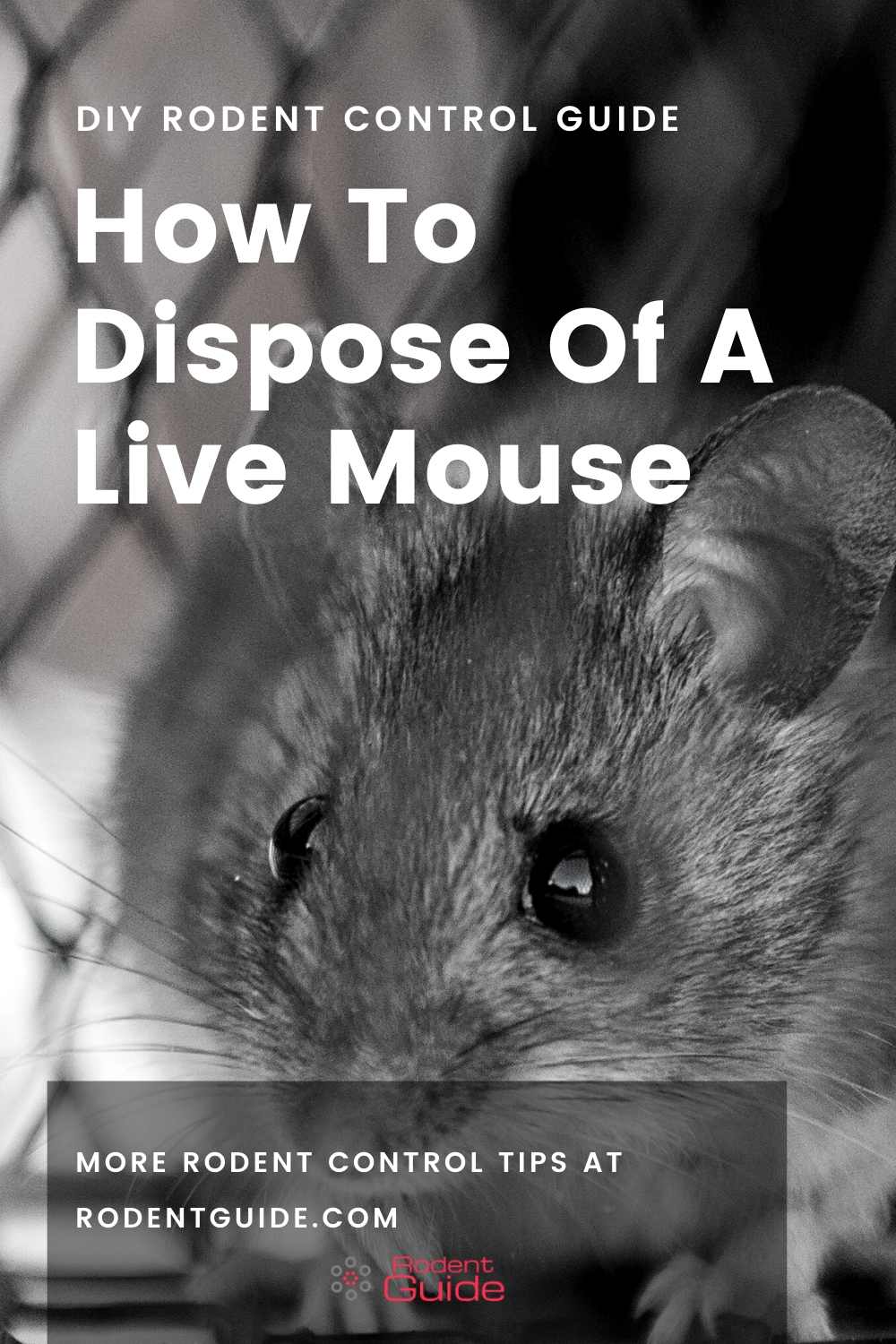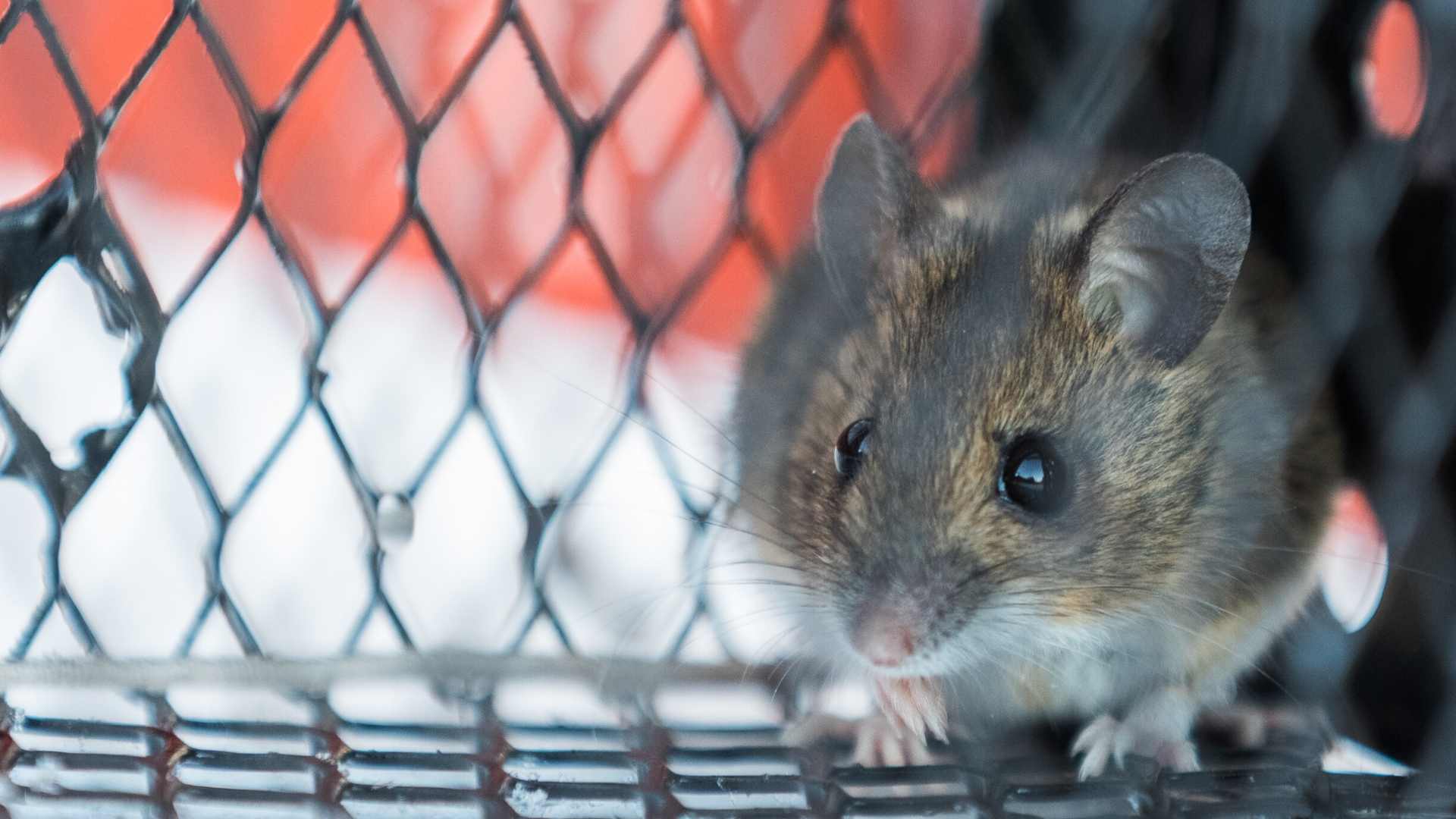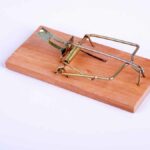So, you have caught a mouse, congratulations! It is the first step to having a mouse-free home! Now, because you are a humane person, you need to know how to dispose of a live mouse?
In this post, we will run you through the process of disposing of a live mouse and the best place to release mice back into the wild. It is important that you do this correctly for the mouse’s safety and ensures it does not return to your home.
Although, if you have covered the common mouse entry points, you can be confident that it will not get back into your home even if it does travel back!
When your home is infested with mice, getting rid of one of them is not enough. You know that, right? You need to ensure that all of the mice are gone before you can be confident that you have a mouse-free home. Now, let’s take a look at what to do with a trapped mouse…
Disposing Of A Live Mouse – Tools You Need

Before you start your journey to dispose of the live mouse you have caught, I recommend that you get the following tools ready. Preparation is key when dealing with live rodents!
- Strong Gloves
- Cover For Trap
- Bag
- Bait
- Your Phone/Computer
- Flashlight
Each one of these tools is important to cover the task at hand correctly.
How To Dispose Of A Live Mouse

Before we begin, we recommend that you dispose of the mouse after sunset. Mice are nocturnal, which means they are most active at night. The mouse is more likely to survive if you dispose of it after sunset.
If you cannot wait until sunset, ensure you dispose of the mouse in an area that offers protection, such as a wooded area.
Research The Area
If you need to know how to dispose of a live mouse, this is one of the most vital steps!
Your first job is to research the best place to release mice into the wild. You cannot simply release the mouse anywhere, especially if you are conscious of the wellbeing of the mouse.
Mice can pretty much live anywhere on this planet, which makes the task much easier.
When releasing a mouse back into the wild, our preference is to offer a new home that offers protection and a good food source. We tend to go for wooded areas where with an abundance of nuts and fruit. These areas offer protection from predators and a good food source.
How far away should you release a trapped mouse? You should ensure the area is over 2 miles away from your home.
Put Your Gloves On
This step is pretty simple. Put your gloves on!
Mice can carry some pretty nasty diseases (Hantavirus being one of them). Your health is vital.
Cover the Trap
We cover the mouse trap with a towel or rag to help keep the mouse calm during transit.
You can never be 100% certain that the mouse is comfortable and stress-free, but it may help keep the mouse calm.
Place Cover, Trap, and Mouse in a Bag
Once you have covered the mouse trap, place it in a bag with plenty of holes in it. You do not want the mouse to suffocate.
The bag will make it easier for you to carry the mouse trap, and is a tool that you can use to transport the empty trap back home. We do this to reduce the chances of contamination.
Travel To Your Destination Carefully
The mouse is likely to have never been in a car before!
When transporting my cat, he lets me know that he is not keen on driving if I turn corners too quickly! Oh, and if you have a cat (an awesome way to keep mice away!), then you will need to use a cat-friendly mouse trap.
His response tells me that animals may suffer from stress or even car sickness when traveling in a car.
The key point is that you take it easy when driving to the ‘release zone’.
Set Your Bait Down
When you get to the release zone, you want the mouse to leave the trap of their own accord. You can make this easier by laying some tasty mouse bait on the floor, or even better, on the bottom of a tree.
When I am disposing of a live mouse, I smear a little peanut butter on the bottom of a tree, which helps to guide to mouse out of the trap.
Open The Trap
Now it is time to lay the trap down and open it. Keep the cover over the back of the trap. We do this to block off the area we plan to walk into when the trap is open. If the mouse cannot see you, then it is more likely to leave the trap.
As you have laid some bait down, place the trap near the bait and open the door.
Back Away and Wait
This is a vital step! Once you open the trap, you need to back away to a distance where the mouse is confident enough to leave the trap.
You should have left the back of the trap covered, so all you need to do is slowly move back and crouch down.
Take the Trap Home and Clean it.
As soon as the mouse leaves the trap and is a safe distance away, go ahead, pick up the trap, place it in the bag, and take it home.
Use disinfectant to clean the trap for re-use.
Frequently Asked Questions

Can a mouse find its way back to your house?
Yes, a mouse can find its way back to your home if you do not dispose of the live mouse far enough away. Ultimately, if there are many houses between you and where you disposed of the live mouse, it is unlikely to get all the way back to yours. The good news is that the mouse is more likely to settle into another house before it reaches yours.
How far away should I release a trapped mouse?
We recommended disposing of a live mouse at least 2 miles away from your home. If you want to be sure, then go further afield.
Can I re-use the mouse trap?
Absolutely! Ensure that you clean the mouse trap thoroughly before using it again. Always set some new mouse bait too.
Conclusion
Catching a mouse in your home is a win! There is no doubt about that. Some folks like to ensure the mouse is dead upon capture, but others take a more humane approach to catching mice. If you are a more humane person, then the tips on this page will help you dispose of a live mouse correctly.
Cathing a mouse is the first step to ensuring that your home is totally mouse-free. When you are sure that all the mice are gone in your home, it is time to begin finding the common mouse entry points and sealing them up!
That way, you can be totally sure that mice will not return.
Good luck!








